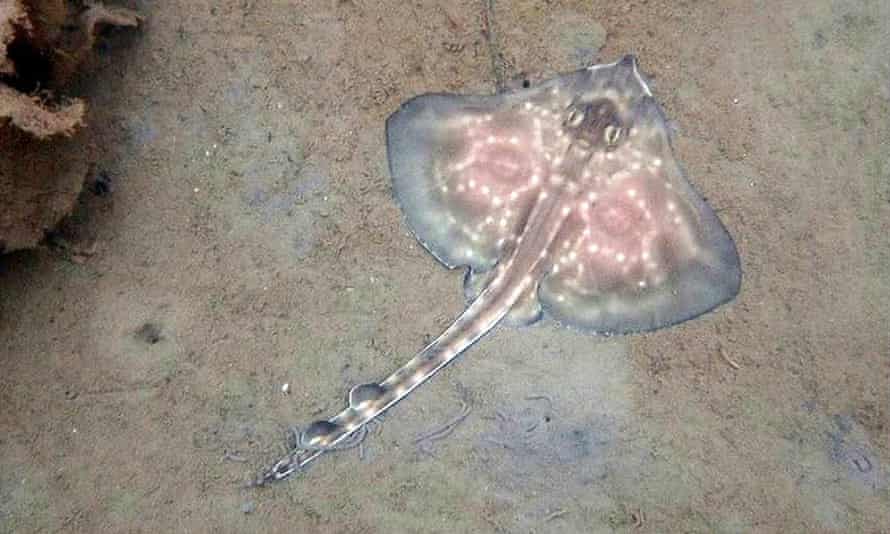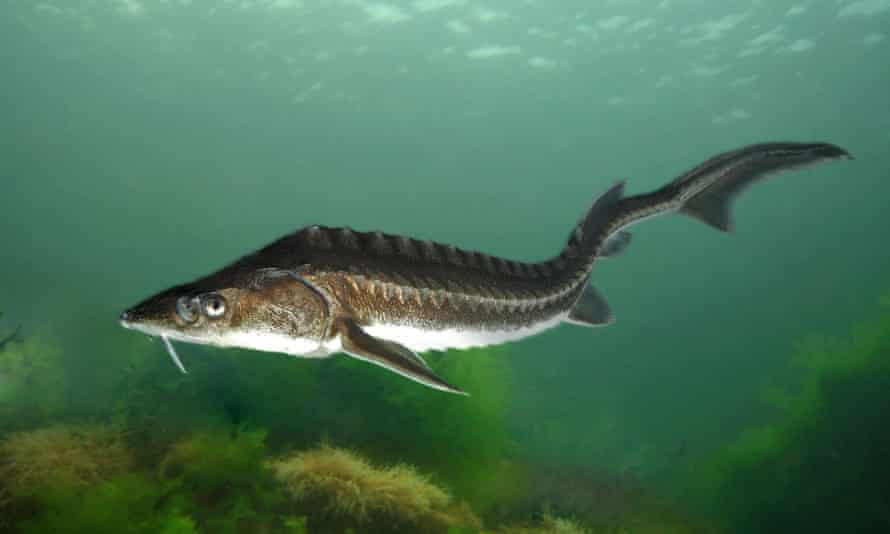Kneeling on the seabed a few metres underwater, I pick up a clam and begin gently cleaning its furrowed, porcelain smile with a toothbrush. It’s a giant clam but a young one and still just a handful. Here in Fiji, giant clams or vasua as they are known, were so heavily overfished for their meat and shells that by the 1980s they were thought to be extinct locally. Australian clams were imported to start a captive breeding programme, and subsequent generations of their offspring have been released on coral reefs across Fiji. They’re still vulnerable to fishing and poaching, but if carefully guarded the giant clams do well and have become symbols of healthy corals reefs inside well-managed marine protected areas.
A key to their early survival is rearing them in cages to keep them safe from predators until they’re large enough to survive by themselves. However, the cages also exclude herbivorous fish, so the clams can easily get overgrown by seaweed, which is where the regular toothbrushing comes in.
Giant clam reintroduction is a relatively rare case of what on landmight be called rewilding. When it comes to putting back lost and vanishing species, be it Yellowstone wolves or British beavers, the underwater realm has been trailing behind its terrestrial counterparts. With no firm definition, initiatives to replant seagrass meadows and re-establish extinct oyster reefs arguably come under the rewilding umbrella. But the notion of returning large, charismatic animals to the ocean is only just beginning to catch on. There are lots of ideas, such as bringing back grey whales to the Atlantic, or Dalmatian pelicans to the UK, but so far only a few have actually been tried out. This reluctance comes down, in part, to a lack of captive-bred marine animals to release into the wild.
“There’s not a lot of them that are propagated or bred and successfully reared in human care,” says Julie Levans from Virginia Aquarium, about 150 miles south of Washington DC. “Unless you’re taking animals from one place and putting them in the other place in the ocean, you don’t really have that many options.”
For many aquatic animals, captive breeding and rewilding are just not going to happen. We’ll probably never see animals such as great white sharks or hammerheads or narwhals living and breeding in aquariums, then being released to the wild. Attempts to bring the last few vaquita porpoises into captivity from the Gulf of California went horribly wrong in 2017, when one panicked and had to be immediately set free, and a second swiftly died of a stress-induced heart attack.
In plenty of cases, ocean reintroductions shouldn’t be necessary because the seas have a tremendous capacity to rewild themselves, given a chance. Leave alone areas of the ocean where fishing and other threats are curtailed and marine populations should bounce back. But there are some cases where particular species may benefit from extra help.
The Raja Ampat Islands in the West Papua province of Indonesia could soon become the site of the world’s first release of captive-bred sharks. The species in question is the zebra shark (Stegostoma tigrinum), known as the leopard shark locally, which is classified as endangered largely due to overfishing, in particular to meet rising demand for shark fin soup.

As a target for rewilding, the zebra shark has several things going for it. First, it’s one of only a few elasmobranchs that breed well in captivity. Second, rather than giving birth to live young, zebra sharks lay egg cases, which are far simpler and safer to ship around the planet. It’s a species that is not doing well in the waters around Raja Ampat, which are inside marine-protected areas and already off limits to fishing boats.
“A lot of the other shark and ray species have recovered from the fisheries back in the early 90s,” says Levans, who is involved in the Stegostoma tigrinum Augmentation and Recovery (StAR) project. “The zebra sharks unfortunately have not.”
These spotted, snub-nosed sharks seem to have been so severely overfished around Raja Ampat that not enough individuals remain for the species to recover unaided. Computer models suggest that sharks released to the area would kickstart the population.
All being well, in November this year zebra shark egg cases will be taken from zoos and aquariums and transported to hatcheries based at the resort of Misool and the Raja Ampat Research and Conservation Centre. The new arrivals are destined to become a poster species for sustainable tourism.
“People from other countries will come to Raja Ampat to see this charismatic creature,” says Prof Charlie Heatubun, head of the research and development agency at the provincial government of West Papua, a key partner in the reintroduction efforts. For tourists, the shark pups swimming in their open-water pens will be a star attraction before they are released to the ocean.
On the other side of the world, elasmobranchs are the focus for a much longer-term plan to restore missing animals. Flapper skates are flat, diamond-shaped relatives of sharks with a two-metre wing span. As Gijs van Zonneveld from ARK Natuurontwikkeling, in the Netherlands, says: “They’re like manta rays.” Highly vulnerable to trawling from the moment they hatch out of their handspan-sized egg cases, these giants are critically endangered and have become exceedingly rare in the North Sea. Van Zonneveld is spearheading an initiative with WWF Netherlands to rewild the North Sea including, they hope, the comeback of flapper skates. He says: “For us, it is very important that flapper skates can return by about 2030.”
The first step Van Zonneveld and colleagues are taking is to work out whether the skates could make their own way into Dutch parts of the North Sea, with individuals migrating from their only remaining strongholds around Shetland and Orkney and the west coast of Scotland. If that proves unlikely, the next step will be to consider the possibility of releasing captive-bred skates. But that is a long way off.
Currently, there are no flapper skates in captivity, and even if there were, it would be a long time before a breeding population could be established. In October 2020, a baby flapper emerged from its egg case at an aquarium in Oban after it was laid on the deck of a fishing boat by a female skate who was caught and subsequently released alive back to the sea. The egg had taken 535 days to hatch.
Then there is the crucial challenge that would await any captive-bred flapper skates or any other animals that might one day be released to the ocean. Species involved in most land-based rewilding efforts are by and large no longer targeted for their pelts or meat. In the ocean, however, intensive hunting of wild animals continues.

“We have an awful lot we need to achieve through fisheries management, as an immediate priority,” says Ali Hood, director of the Shark Trust. Even within marine protected areas, animals such as flapper skates may not be safe from getting caught in trawl nets, which still operate in many of these zones.
Until intensive fishing pressure is addressed in the North Sea, no flapper skates will be released. Van Zonneveld sees the answer as lying partly in helping the fishing industry to adapt its gear and avoid catching them in the first place, and to release them carefully if they do. He says: “What we’re trying to do when we’re bringing back the flapper skate is to forge new relationships between the users of the North Sea and the ecology of the North Sea.”
Another mobile, ocean-going species has already been released from captivity in massive numbers. Growing up to six metres, the length of an orca, European sea sturgeon have been hunted across Europe for centuries, mostly for their meat rather than eggs, for which their sister species further east, such as sevruga and beluga, are highly prized. Like salmon, the fish spend their adult lives at sea before swimming up rivers to spawn, although unlike salmon they keep mating throughout their centenarian lives, sometimes actively straying into different rivers.
The last time they were seen spawning was in the Gironde estuary in France in 1994. In an attempt to return them to their former glory, about 1.6m captive-reared young sturgeon have been released across Europe in the past decade or so. That’s roughly the time it takes for sturgeon to reach maturity, which means, as Rory Moore from BLUE Marine Foundation says: “We may have fish coming back to spawn very soon.”
Moore and his colleague Alex Hubberstey are part of the newly formed UK Sturgeon Alliance, a group working towards seeing sturgeon swimming once again through Europe’s waterways, including in their former ranges across the UK. Moore says: “We really have a responsibility to make sure that our rivers are suitable for them to return.”

This summer, Moore and Hubberstey will search the Rivers Wye, Towy (or Tywi in Welsh) and Severn for suitable sturgeon spawning grounds. Sturgeon chiefly need gravel beds of the right consistency to lay their eggs. The scientists will also gather samples of environmental or eDNA from the water and riverbed mud to see if the right kinds of invertebrate prey are present for sturgeon to eat – they are bottom feeders – and to look for sturgeon themselves. Fish shed fragments of skin and cells in the water. “It would just be amazing,” says Moore, “if we found a hint of a sturgeon out there.”
The next stage will involve working out where sturgeon need help negotiating weirs that stand between them and their spawning grounds. Time will tell how many released sturgeon have survived their sea-based youth, and whether the great spawning runs will recommence, but a few are already showing up. In August last year, a tagged French sturgeon was caught off the Devon coast, demonstrating the interconnected nature of this kind of aquatic rewilding.
“One of the hopes is that, eventually, every major river that has available habitat and is connected will have a healthy sturgeon population in it, with sturgeon coming back and forth from Europe,” says Hubberstey. And as they do, the sturgeon will have to run the gauntlet of fisheries.
“There are still many questions with respect to the reality of rewilding programmes for mobile marine species,” says Hood. Guarding a giant clam that stays put is difficult enough, but preventing other released species from swimming straight into a fishing net is another matter entirely. The intentions of captive breeding and release efforts, Hood says, need to extend beyond the moment of release, throughout the long lives of individual animals and on to future generations. She says: “This is a challenging task in an ocean rife with overfishing.”
-
Dr Helen Scales is a marine biologist, diver, surfer and author of The Brilliant Abyss: True Tales of Exploring the Deep Sea, Discovering Hidden Life and Selling the Seabed (Bloomsbury Sigma, £16.99). To support The Guardian and Observer, order your copy at guardianbookshop.com. Delivery charges may apply.








